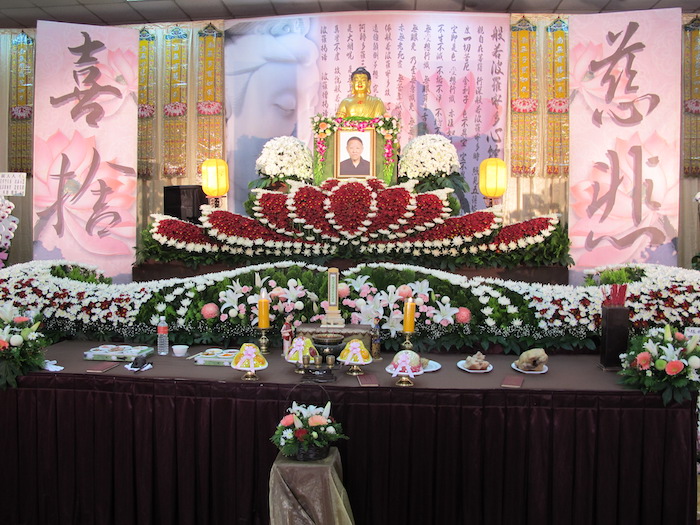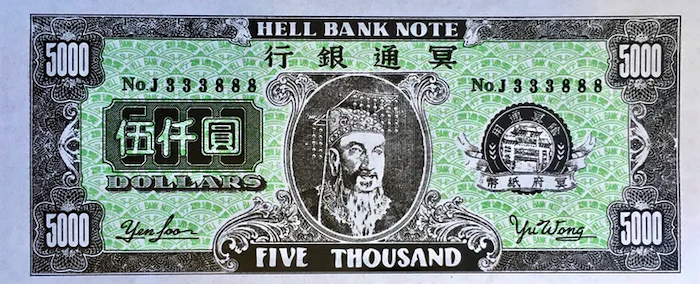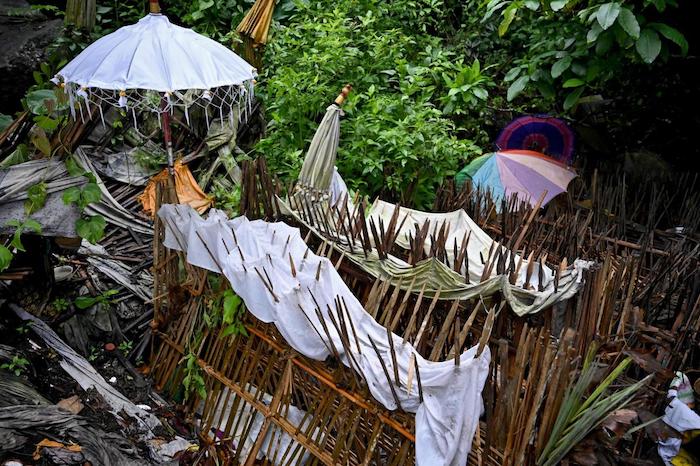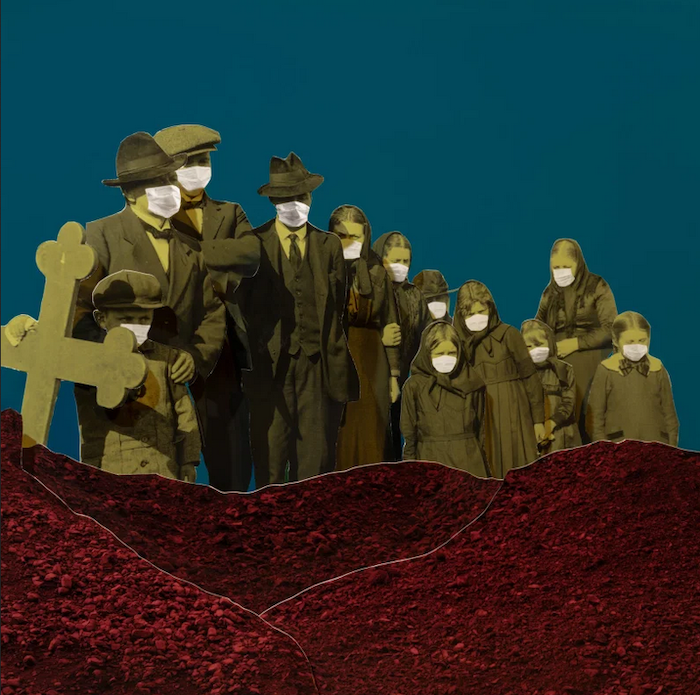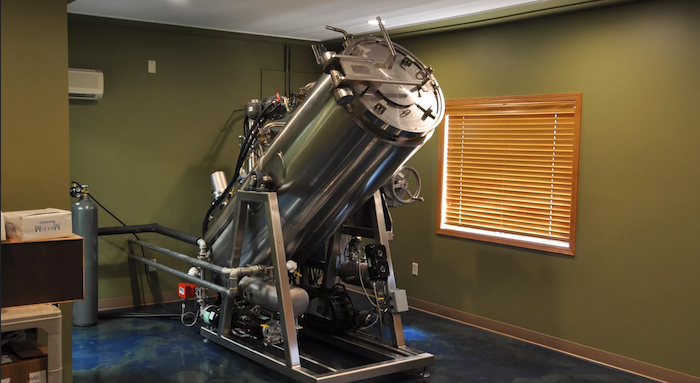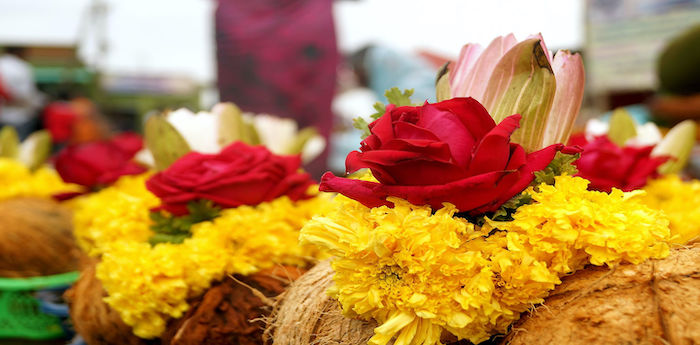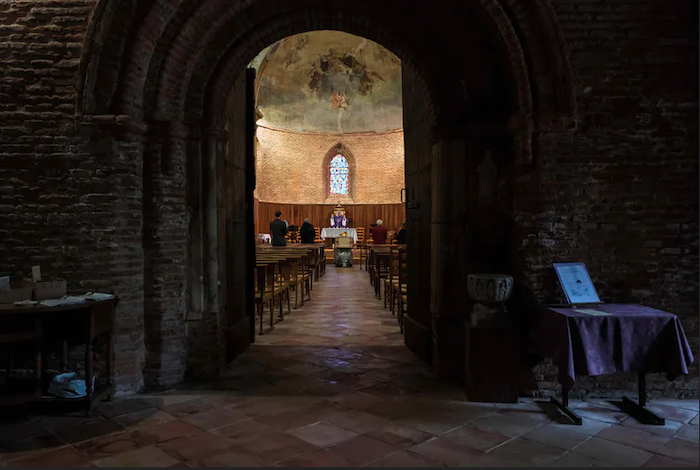and it made me question everything about American funerals

- A small network of cemeteries across the country are looking to shake up American burial practices and make them eco-friendly by offering “green burials.”
- Green burial rejects cremation, embalming, and concrete-lined graves to reduce the carbon footprint of death.
- A national survey found that over half of respondents were interested in exploring green funeral options because of potential environmental and cost-saving benefits.
Cindy Barath is the steward of a 32-acre property in the hills of Mill Valley, California, and all the bodies that come with it.
She spends her days planning ceremonies, receiving the bereaved, and caring for the dead. She’s honest at dinner parties about her job, and when people are surprised to hear that she personally dresses the corpses, she tells them, “Well, they don’t dress themselves.”
I met Cindy Barath on a cool October morning. I was a graduate student hoping to write an article about rocketing property prices putting pressure on the cost of a grave. My tentative headline was: “The cost of living is rising. Is the cost of dying, too?”
I arrived at Fernwood Cemetery looking for a story about real estate. But I found something different, and in my opinion, more interesting: a small movement looking to shake up American burial practices and make them environmentally friendly.
In a traditional American burial, a body is embalmed, then placed in a coffin and laid to rest in a concrete-lined grave. The custom is resource intensive. Each year, it uses 4.3 million gallons of embalming fluid, 20 million board feet of hardwood, and 1.6 million tons of concrete, according to the Green Burial Council.
The “green burial” movement looks to change that.
Barath offered me a tour of the property via her shiny black golf cart. We hop in and she hits the gas. We whip by eucalyptus trees, wood-chip trails, and the mounds of fresh graves.
Barath is not the funeral director I imagined. She has a warm, folksy demeanor, and wears her auburn hair in short curls that are closely cropped to her head. Her wardrobe reminds me of my high school home economics teacher — long, warm sweaters and a chunky gemstone necklace.
We pull up to a spot overlooking the hills, which are patched with light and shadow by the misty clouds overhead. It’s quiet, but if you listen closely, you can hear the distant chatter of recess from an elementary school a few miles away. “Sure beats the office,” said Barath with a chuckle, dismounting from the driver’s seat.
Green burials are generally defined by what they don’t do. They don’t cremate, which burns through gallons of fuel to turn the body to ash. They don’t embalm, which pumps formaldehyde into the body to preserve it. And they don’t line a grave with concrete, which slows decomposition.
But from there, the details vary. Customers can choose biodegradable containers that range from a pine box to a hand-sewn silk shroud. Some cemeteries offer flat stone markers, others record grave locations with a GPS tracking system. Fernwood even offers a mushroom suit, a shroud of fungal spores that aid in decomposition and detoxification.
Beyond Fernwood Cemetery, options abound for the late nature-lover. A Canadian design firm created an urn called “ROOTS,” made from coffee grounds and lime that will germinate a tree. A company called Better Place Forests is conserving hundreds of acres of land in California and Arizona where families can reserve a memorial tree to spread ashes. And an organization called Eternal Reefs can inturn your cremated ash into a concrete “reef ball” that restores ocean habitats.
A new name for an old practice
Although green burial is marketed as an eco-friendly choice, its customs existed long before the environmental movement. A simple burial without the frills of chemicals and concrete is ancient. Green burial is, essentially, a new word for an old practice.
Take Jewish burial traditions, for example.
“Jewish burial traditions and customs have been green for the last 3,000 years,” said Glenn Easton, executive Funeral Director at The Garden of Remembrance Memorial Park in Maryland. “In Israel, they don’t use caskets. They don’t embalm. They don’t use concrete liners. They use a shroud and put people in the ground.”
Easton says his Orthodox Jewish customers are especially green, since they prioritize letting a body decompose quickly. They even have a workaround called “butterdishing” for cemeteries that require concrete liners: they line the sides and top of the grave, and leave the bottom open to the earth.
Green burial isn’t too different from the way we bury the indigent, either. At potter’s fields across the country, governments bury those who are too poor to afford funeral services, or bodies that are unclaimed, in simple graves without coffins, concrete, or chemicals. The only difference: rather than a shroud or pine box, they are often buried in plastic body bags.
Unlike coffee-ground urns and “reefballs,” green burial is old technology. But while it doesn’t contribute much in terms of innovation, it does spark an important conversation. Green burial prompts us to ask why our rituals of death default to using formaldehyde and concrete.
In America, embalming can be traced back to the Civil War. The soldiers who died fighting on the battlefields of North Carolina needed to have their bodies transported back north to be buried. Preservation became a necessity.
Meanwhile, concrete liners can be traced to America’s obsession with the perfect lawn. Funeral directors say that they are useful for landscaping: they prevent the ground above a grave from sinking or collapsing. Many cemeteries require the concrete. It keeps things smooth for their industrial mowers.
The difference is apparent at Fernwood’s Green Cemetery. Rather than neat rows of gravestones and uniformly-trimmed fescue, the cemetery’s green burial sections are dotted with native grasses and shrubs. In parts, the landscape is steeply sloped. A lawnmower would have a tough time.
Changing times
The movement is still in its early days. There are at least 287 cemeteries in the US and Canada that offer green burial services, according to New Hampshire Funeral Resources. And at some of those cemeteries, like Wooster Cemetery in Connecticut, traditional burials vastly outnumber their green counterparts.
The cadre is small, but Ed Bixby, president of the Green Burial Council, which certifies green cemeteries, is hopeful. A national survey found that over half of respondents were interested in exploring green funeral options because of potential environmental and cost-saving benefits.
And Bixby says that end-of-life customs are more changeable than they seem.
Take cremation, for example. In 1975, only 6% of Americans chose cremation, according to the Cremation Association of North America. Traditional burial with embalming was standard.
Funeral directors considered cremation to be no more than “a flash in the pan,” said Bixby.
But it wasn’t. Cremation was a fraction of the price of traditional burial, and it was adopted widely.
Today, cremation is king. More than half of all Americans choose cremation, according to the National Funeral Directors Association. It surpassed traditional burial as the most popular end-of-life solution back in 2015.
Direct cremation, which forgoes a viewing or other ceremony, can cost as little as $750. But since green burial is less expensive than traditional burial, Bixby believes it could gain traction as the “official third option.”
Traditional burials, with a vault, cost a median of $9,135 in 2019, according to the National Funeral Directors Association. By forgoing embalming ($750), a cement vault ($1495), and opting for a simple shroud or pine box over a wood casket ($3,000), or metal burial casket ($2,500), those choosing green burial can save thousands.
Still, Glenn Easton emphasizes that at his cemetery, “green burials are not influenced or determined by financial decisions.” Instead, “they’re a philosophical preference.”
And Cindy Barath says that the simplicity of a green burial service, and emphasis its emphasis on nature, helps the bereaved. “I try to cut through all the red tape and make it easy and simple. Just help them make this transition. I know if they come in crying and come out laughing, something has taken place.”
Complete Article ↪HERE↩!

